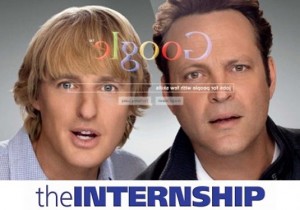The day after I graduated high school in New Jersey, I flew to San Francisco. It was my first trip to that city, and I was visiting my girlfriend, who lived in Tiburon.
The next ten days became one of life’s memorable “moments”, and San Francisco has played a role in my dreams ever since.
And I am not alone.
More than probably any other city in the USA – and possibly the world – San Francisco is setting the trends, pace and norms of social interaction for the twenty-first century.
The latest person to chronicle this evolution is Nathan Heller, whose article “Bay Watched: How San Francisco’s new entrepreneurial culture is changing the country”, appeared in the October 14, 2013 issue of The New Yorker. (The full article is freely available on The New Yorker website.)
Heller is an interesting character. He grew up in San Francisco and graduated from Harvard University in 2006, a classmate of Mark Zuckerberg, the founder of Facebook. In fact, Zuckerberg lived only a few rooms away from him during their freshman (first) year. In his devastating critique of how the film “The Social Network” got Harvard wrong, Heller writes of his classmates: “The kids entering Harvard in 2002 came largely from pressure-cooker public schools, dorm-room entrepreneurships, the cutthroat upper echelon of prep institutions, or, in my case, the all-weather-fleece-wearing wilds of San Francisco.”
Zuckerberg, as we all know, came from a combination of “upper echelon of prep” schools (he attended Phillips Exeter Academy) and “dorm room entrepreneurship”.
All of this is relevant to Heller’s insights into the new technological elite. He grew up where it is happening, and he went to college with those (Zuckerberg et al) who are making it happen. By his own admission, Heller never learned how to drive, and currently lives in New York City.
Heller’s description of San Francisco is both literary and colourful:
San Francisco has traditionally been a Dungeness crab of a city, shedding its carapace from time to time and burrowing down until a new shell sets…. San Francisco has never been dominated by anything, but it’s always ended up pre-eminent in something. Gold, for instance. Free love. Microchips…. Those irked by change rarely stay long.
Lately, the pattern has begun to break. San Francisco is an industry town. This industry is usually called “tech,” but the term no longer signifies what it used to. Tech today means anything about computers, the Internet, digital media, social media, smartphones, electronic data, crowd-funding, or new business design.
At some point, in other words, tech stopped being an industry and turned into the substrate of most things changing in urban culture.
Heller continues that, “Everyone had a sense that Northern California was the source” of these major cultural changes, yet few people actually understand why. San Francisco has come to personify the new capitalist technological elite, one that is increasingly populated by the young. Its “growing startup culture has a dreamy, arty, idealistic bent: this is the whimsy of youth carried to a place where youth and whimsy have not often thrived.” This is a throw-back to the 1960s, but with a major difference: unlike the hippie “communitarian” focus, this “rising metropolitan generation … is creative, thoughtful, culturally charismatic, swollen with youthful generosity and dreams—and fundamentally invested in the sovereignty of private enterprise.”
This is not limited to the San Francisco Bay area. You find it in parts of New York City, in Austin, in Seattle and in the back streets of Cambridge, Massachusetts. Here in Sydney, there is a thriving young tech entrepreneurial culture nesting in inner Sydney suburbs, from Pyrmont and Ultimo through the central business district to Darlinghurst and Surry Hills and reaching to the lower north shore. The same exists in Melbourne, and – I am sure – many other major cultural capitals.
This is not a particularly new phenomenon. I sensed this in my own flirtation of working as a business development manager in a (soon to fail) tech start-up during 2000 and 2001. We wore collared t-shirts with the company name emblazoned on them, and – even then – took all of our cultural cues and most of our professional language from Silicon Valley. I was the second oldest employee.
So while not new, as 2013 comes to a close, San Francisco has increased its dominance of our tech dreams. Facebook did not exist back in 2000 (Zuckerberg and Heller were still juniors in high school), Google was still in its infancy and Apple was struggling.
I cannot predict where this world will be in another ten years, but I do know this: San Francisco will continue to personify the hopes, dreams and business models of that world, one that will arrive sooner than we think.





 Posted by donperlgut
Posted by donperlgut 





